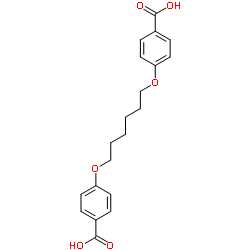Activation of TRPC6 channels is essential for lung ischaemia-reperfusion induced oedema in mice.
Norbert Weissmann, Akylbek Sydykov, Hermann Kalwa, Ursula Storch, Beate Fuchs, Michael Mederos y Schnitzler, Ralf P Brandes, Friedrich Grimminger, Marcel Meissner, Marc Freichel, Stefan Offermanns, Florian Veit, Oleg Pak, Karl-Heinz Krause, Ralph T Schermuly, Alison C Brewer, Harald H H W Schmidt, Werner Seeger, Ajay M Shah, Thomas Gudermann, Hossein A Ghofrani, Alexander Dietrich
文献索引:Nat. Commun. 3 , 649, (2012)
全文:HTML全文
摘要
Lung ischaemia-reperfusion-induced oedema (LIRE) is a life-threatening condition that causes pulmonary oedema induced by endothelial dysfunction. Here we show that lungs from mice lacking nicotinamide adenine dinucleotide phosphate (NADPH) oxidase (Nox2(y/-)) or the classical transient receptor potential channel 6 (TRPC6(-/-)) are protected from LIR-induced oedema (LIRE). Generation of chimeric mice by bone marrow cell transplantation and endothelial-specific Nox2 deletion showed that endothelial Nox2, but not leukocytic Nox2 or TRPC6, are responsible for LIRE. Lung endothelial cells from Nox2- or TRPC6-deficient mice showed attenuated ischaemia-induced Ca(2+) influx, cellulafunction. Production of reactive oxygen species was completely abolished in Nox2(y/-) cells. A novel mechanistic model comprising endothelial Nox2-derived production of superoxide, activation of phospholipase C-γ, inhibition of diacylglycerol (DAG) kinase, DAG-mediated activation of TRPC6 and ensuing LIRE is supported by pharmacological and molecular evidence. This mechanism highlights novel pharmacological targets for the treatment of LIRE.
相关化合物
| 结构式 | 名称/CAS号 | 分子式 | 全部文献 |
|---|---|---|---|
 |
1,6-双(4-羧基苯氧基)己烷
CAS:74774-53-1 |
C20H22O6 |
|
Hemagglutinin-based polyanhydride nanovaccines against H5N1 ...
2015-01-01 [Int. J. Nanomedicine 10 , 229-43, (2015)] |
|
Polyanhydride Nanoparticle Delivery Platform Dramatically En...
2015-01-01 [PLoS Negl. Trop. Dis. 9 , e0004173, (2015)] |
|
Upregulation of FLJ10540, a PI3K-association protein, in ros...
2015-01-01 [Biochem. Pharmacol. 93(1) , 34-41, (2015)] |
|
Anti-inflammatory activity of Chios mastic gum is associated...
2011-01-01 [Nutr. J. 10 , 64, (2011)] |
|
Design of an injectable system based on bioerodible polyanhy...
2002-11-01 [Biomaterials 23 , 4405, (2002)] |